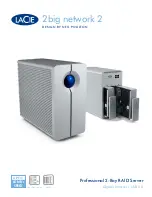
102 MTPSR1-120
Firewall User Guide
data to the next step in the route).
Internetwork Packet Exchange (IPX): A NetWare communications protocol used to route messages from one node to
another. IPX packets include network addresses and can be routed from one network to another. An IPX packet can
occasionally get lost when crossing networks, thus IPX does not guarantee delivery of a complete message. Either the
application has to provide that control, or NetWare’s SPX protocol must be used.
Interoperable: Devices from different vendors that can exchange information using a standard’s base protocol.
I/O Addresses: Locations within the I/O address space of your computer used by a device, such as an expansion card, a
serial port, or an internal modem. The address is used for communication between software and a device.
IRQ Level (Interrupt Request Level): The notification a processor receives when another portion of the computer’s
hardware requires its attention. IRQs are numbered so that the device issuing the IRQ can be identified, and so IRQs can
be prioritized.
ISA (Industry Standards Architecture) (pronounced “ice a”): The classic 8 or 16-bit architecture introduced with IBM’s
PC-AT computer.
ISDN (Integrated Services Digital Network): An International telecommunications standard for transmitting voice, video
and data over a digital communications line. ISDN is a worldwide telecommunications service that uses digital transmission
and switching technology to support voice and digital data communications. Frame relay was partially based on ISDN’s data
link layer protocol (LAPD). Frame relay can be used to transmit across ISDN services offering circuit-switched connection at
64 Kbps and higher speeds. Contrast Public Switched Telephone Network (PSTN).
ITU-TSS (formerly CCITT): International Telecommunications Union-Telecommunications Sector; the United Nations
organization that prepares standards (“Recommendations”) for resolving communications issues and problems.
J
No Entries.
K
Key Telephone System (KTS): Phone devices with multiple buttons that let you select incoming or outgoing CO phone
lines directly. Similar in operation to a PBX, except with a KTS you don’t have to dial a “9” for a call outside the building.
Key Service Unit (KSU): A small device containing the switching electronics for a business key telephone system (KTS).
Key Set: A telephone set with several buttons for call holding, line pickup, intercom, autodialing, etc. Also called a Touch-
Tone phone (Ericsson) and a KTS (Key Telephone Set).
L
LAPB: Link Access Procedure Balanced; based on the X.25 Layer 2 specification. A full-duplex point-to-point, bit-
synchronous protocol commonly used as a data link control protocol to interface X.25 DTEs. LAPB is the link initialization
procedure that establishes and maintains communications between the DTE and the DCE.
LAPD: Link Access Protocol for the D-Channel; based on the ISDN Q.921 specification. A full-duplex, point-to-point bit-
synchronous link-level protocol for ISDN connections; different from LAPB in its framing sequence. Transmission is in units
called “frames”, and a frame may contain one or more X.25 packets.
Line Coding: The representation of 1s and 0s on a T1 line. The two methods of line coding commonly used, B8ZS and
AMI, differ in the restrictions placed on user data. T1 line coding ensures that sufficient timing information is sent with the
digital signal to ensure recovery of all the bits at the far end. Timing information on the T1 line is included in the form of 1s
in the data stream; a long string of 0s in the data stream could cause problems recovering the data.
Line Termination (LT): The electronics at the ISDN network side of the user/network interface that complements the NT1
at the user side. The LT and the NT1 together provide the high-speed digital line signals required for BRI access.
Listed Directory Number (LDN): The main number assigned by the telco; the number listed in the telephone directory and
also provided by Directory Assistance. Some devices can have more than one LDN, such as ISDN devices that have one
LDN for voice and another LDN for data.
Local Area Network (LAN): 1. A computer network located on a user’s premises within a limited geographical area.
Communication within a local area network is not subject to external regulations; however, communication across the LAN
boundary may be subject to some form of regulation. 2. A LAN does not use store-and-forward techniques. 3. A network in
which a set of devices are connected to one another for a communication and that can be connected to a larger network.
Local Access and Transport Area (LATA): A post-divestiture geographical area generally equivalent to a Standard
Metropolitan Statistical Area. At divestiture, the territory served by the Bell system was divided into approximately 161
LATAs. The Bell Operating Companies (BOCs) provide Intra-LATA services.
Local Exchange Carrier (LEC): The local phone company which provides local (i.e., not long distance) transmission
services. AKA “telco”. LECs provide T1 or FT1 access to LDCs (unless the T1 circuit is completely intra-LATA). Inter-LATA
Summary of Contents for PROXYSERVER MTPSR1-120
Page 1: ...Dual Ethernet ProxyServer Model MTPSR1 120 User Guide ...
Page 5: ...Chapter 1 Introduction and Description ...
Page 14: ...14 MTPSR1 120 Firewall User Guide ...
Page 15: ...Chapter 2 Installation ...
Page 20: ...20 Dual Ethernet ProxyServer User Guide ...
Page 21: ...Chapter 3 Software Loading and Configuration ...
Page 29: ...Chapter 4 Firewall Software ...
Page 49: ...Chapter 5 Client Setup ...
Page 66: ...66 MTPSR1 120 Firewall User Guide ...
Page 67: ...Chapter 6 Remote Configuration ...
Page 72: ...72 MTPSR1 120 Firewall User Guide ...
Page 73: ...Chapter 7 Firewall Management ...
Page 78: ...78 MTPSR1 120 Firewall User Guide ...
Page 79: ...Chapter 8 Warranty Service and Tech Support ...
Page 84: ...84 MTPSR1 120 Firewall User Guide ...
Page 85: ...Appendixes ...
Page 94: ...94 MTPSR1 120 Dual Ethernet ProxyServer User Guide ...
Page 95: ...Glossary of Terms ...









































